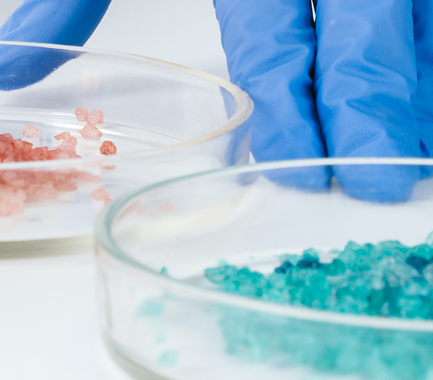Your contact
PENPET-Team - Hamburg

Jan Prager
Sales
Tel. +49 (0) 40 - 675 7 99 10
sales@penpet.de
Get in touch with us.
Methylcyclohexane
Methylcyclohexane is an aliphatic hydrocarbon from the group of cycloalkanes, which is an important solvent for the chemical industry. The structurally similar but aromatic toluene is predominantly hydrogenated to produce the compound. Methylcyclohexane can also be obtained from n-heptane using dehydrocyclization methods. Natural occurrences of small amounts of the substance include plants such as papaya and Brazilian guava.
The compound is an effective solvent used in the processing of polystyrene, rubber, synthetic rubber, chlorinated rubber, cellulose esters, copal esters, rosin, pontianak and elemi, among others. It is found in many rubber products, coatings, paints and polishes. In addition, methylcyclohexane serves as an intermediate for the synthesis of organic compounds.
At PENPET you get methylcyclohexane of the highest quality, from a reliable partner who will also meet your requirements in the long term. We look forward to receiving your inquiry for an individual offer. Prompt delivery of the liquid compound can be made in packages with different weights.
CAS no. 108-87-2
EINECS no. 203-624-3
Molecular formula: C7H14
Synonyms: cyclohexylmethane, hexahydrotoluene, heptanaphthene
Areas of application: Solvent, starting material for the synthesis of organic compounds
More Information
Methylcyclohexane is a non-aromatic, cyclic hydrocarbon. The structure of the saturated compound is dominated by a cyclic compound of six carbon atoms. One of these atoms is bonded to a methyl group. The substance thus consists exclusively of carbon and hydrogen, whose bonds are hardly polar electrically. Methylcyclohexane is therefore practically insoluble in water, but is suitable as a solvent for compounds that are also non-polar.
Methylcyclohexane is present as a colorless liquid with a sweet, gasoline-like odor. The compound boils at a temperature of 101 °C under normal pressure and only solidifies to a solid when it cools below -127 °C. Methylcyclohexane is not soluble in water and will float on water on contact due to its low density. However, the compound is very soluble in many organic solvents such as carbon tetrachloride, diethyl ether, ethanol, benzene and acetone.
The substance is chemically stable under normal storage conditions. However, methylcyclohexane reacts easily with strong oxidizing agents, which can lead to dangerous and violent reactions. There is a risk of explosion in air due to the formation of peroxides. The compound should also be kept away from strong bases, strong acids and epoxides. When storing and processing, it should be noted that the substance can attack coatings and materials made of rubber and plastic. The compound should be kept cool and in airtight containers.
Methylcyclohexane is combustible and highly flammable. There is a particular hazard from the vapors of the volatile compound, which can combine with the ambient air to form explosive mixtures. These vapor-air mixtures are heavier than air and can spread unnoticed along the floor of the workroom. To avoid remote ignition, when handling open containers of the substance, care must be taken to keep a safe distance from possible sources of ignition such as flames, mechanically generated sparks, electrical discharges and hot devices and surfaces.
Methylcyclohexane poses acute and chronic health hazards. Contact of the compound with the skin can cause severe irritation, redness and degreasing. Wetted parts of the body must be cleaned immediately with soap and water. Long-term skin sensitization is possible with repeated or prolonged exposure. The substance causes slight irritation, reddening and increased tear flow in the eyes. After rinsing the affected eye under running water, ophthalmological treatment should be arranged.
Inhalation of compound vapors may cause respiratory irritation, burning pain and coughing. Ingestion of methylcyclohexane causes gastrointestinal symptoms such as stomach pain, nausea, diarrhea and vomiting. Aspiration of vomit can cause lung damage. From the stomach, the compound quickly enters the metabolism. The absorption of the substance leads to disorders of the central nervous system, which can range from headaches, drowsiness and tiredness to convulsions, unconsciousness, respiratory paralysis and cardiac arrest. If poisoning through oral intake of methylcyclohexane is suspected, rapid medical treatment and subsequent medical monitoring of symptoms that occur later must be ensured.
With regard to possible damage to aquatic organisms, methylcyclohexane has been rated as highly hazardous to water. Any penetration of the compound into bodies of water, the ground or sewage must be avoided. The local authorities must be informed immediately if even small amounts of the substance escape into the environment. As a hazardous substance, methylcyclohexane is subject to special transportation regulations.
